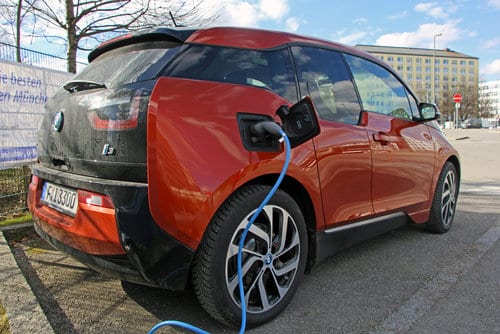A team of US engineers, led by one of the co-inventors of the game-changing lithium-ion battery, has made a new battery storage breakthrough that could also be a game-changer – particularly for the uptake of electric vehicles.

The team, from The University of Texas, in Austin, claims to have come up with a low-cost all-solid-state battery that is noncombustible and has a long cycle life, has fast rates of charge and discharge and at least three times as much energy density as today’s lithium-ion batteries.
In terms of electric vehicles, this sort of boost to energy density is all-important, allowing battery-powered cars to drive further between charges. It also allows for a greater number of charging and discharging cycles, which means longer battery life, as well as a faster rate of recharge – another key hurdle restricting the mass adoption of electric vehicles.
The breakthrough, first reported in a paper published in the journal Energy & Environmental Science, was overseen by team leader 94-year-old John Goodenough, professor in the UT’s Cockrell School of Engineering and a co-developer of the li-ion battery.
And it draws on solid glass electrolyte discoveries of senior research fellow Maria Helena Braga, who first worked on the technology with colleagues, at the University of Porto in Portugal, and then with Goodenough and researcher Andrew J. Murchison at UT Austin.
Braga said that Goodenough brought an understanding of the composition and properties of the solid-glass electrolytes that resulted in a new version of the electrolytes that is now patented through the UT Austin Office of Technology Commercialisation.
“We believe our discovery solves many of the problems that are inherent in today’s batteries,” Goodenough said in a UT report.
“Cost, safety, energy density, rates of charge and discharge and cycle life are critical for battery-driven cars to be more widely adopted,” he said.
The use of an alkali-metal anode (lithium, sodium or potassium) — which isn’t possible with conventional batteries — increases the energy density of a cathode and delivers a long cycle life. In experiments, the researchers’ cells have demonstrated more than 1,200 cycles with low cell resistance.
Another benefit to using the glass electrolyte is safety: Current lithium-ion batteries use liquid electrolytes to transport the lithium-ions between the anode and the cathode. If a battery cell is charged too quickly, it can cause dendrites or “metal whiskers” to form and cross through the liquid electrolytes, causing a short circuit that can lead to explosions and fires.
Additionally, because the solid-glass electrolytes can operate, or have high conductivity, at -20 degrees Celsius, it could perform well in subzero degree weather. It is also the first all-solid-state battery cell that can operate under 60°C.
Another advantage is that the battery cells can be made from earth-friendly and abundant materials.
“The glass electrolytes allow for the substitution of low-cost sodium for lithium. Sodium is extracted from seawater that is widely available,” Braga said.
According to the UT, Goodenough and Braga are continuing to advance their research and are working on several patents. In the short term, they hope to work with battery makers to develop and test their new materials in electric vehicles and energy storage devices.










